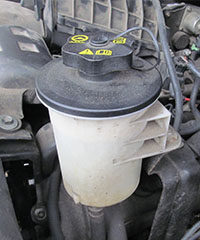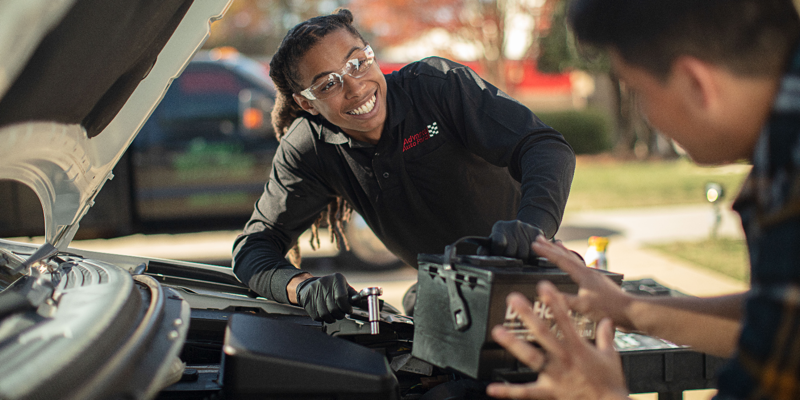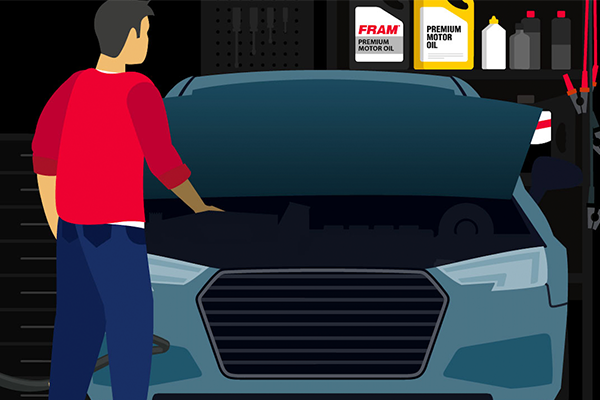Prior to 1951 – the year power steering first became commercially available on passenger cars, despite having been invented in the late 1800s – drivers had no choice but to put considerable muscle into trying to turn the steering wheel, particularly at low speeds. That's why steering wheels on older cars were so big – to provide drivers with much-needed added leverage that made steering a little easier. For many years, power steering wasn't even included as standard equipment on new vehicles but was instead available as an expensive option. Today, not so much. Power steering is standard on virtually every new vehicle sold. But how exactly does power steering work to make turning easier?
Hydraulic and Electric Power Steering Systems
The foundation of today's power steering system rests on one of two options, depending on your vehicle:
1. Hydraulic Power Steering: a power steering pump, powered by an engine-driven belt, circulates pressurized power steering fluid through a series of valves, ports, a piston and a cylinder.
In a hydraulic system, when the driver turns the wheel one way, power steering fluid exerts pressure against one side of the piston, while on the opposite piston side, the fluid is allowed to flow back into the power steering fluid reservoir through an open valve. The added pressure on just one side causes the piston to move and exert added force that helps turn the wheels, along with some added input and leverage from the steering gears or rack and pinion, and torsion bar. When the steering wheel isn't being turned, no pressure is exerted on the piston, and the power steering fluid flows into the reservoir. This absence of pressure on the piston allows it to return to the neutral position, along with the steering wheel.
Pro Tip: For hydraulic power steering systems, check your owner's manual, or enter your vehicle information at Advance, to determine what type of fluid to use. In some vehicles, it's power steering fluid, while in others it could be automatic transmission fluid.
2. Electric Power Steering: a DC motor is used instead of hydraulics. The motor provides power assist and is primarily used with rack and pinion steering systems. Controlled by the PCM, a steering torque sensor provides the main input (more torque equals more voltage). In an electric system, either the DC motor or the rack and pinion assembly is typically replaced.
Because the power steering system's physical components are interconnected, steering is still possible even if the hydraulic system fails. Without the added assistance that hydraulic power or an electric power-assist motor delivers, it'll just be more difficult to turn the wheels — like in the old days.

Source | Riccardo Bresciani | Pexels
WARNING SIGNS THAT YOUR POWER STEERING MAY BE FAILING
Things can and do go wrong with power steering system components, just as they can with other vehicle parts. Electric systems are relatively easy to work on as diagnosis is usually minimal — they tend to either work or not work, with no in-between. When they fail, the power-assist motor or rack and pinion assembly gets replaced, and some associated sensors will probably require calibration. Hydraulic systems, on the other hand, can fail gradually and might be more challenging to diagnose.

Low fluid in a hydraulic system can damage the power steering pump, so be sure to top off the reservoir while you're doing your other routine checks under the hood. The level should be between the min and max lines on the reservoir, if present.
Air that enters the hydraulic system through a leak could be one culprit causing the problems, or unbalanced tires generating vibrations that reverberate throughout the system could place undue stress on parts and cause them to fail. With that in mind, some warning signs associated with impending or real-time failures in hydraulic power steering include the following:
- Needing to refill the power steering fluid reservoir frequently. If the fluid level here is falling below the “safe" or “add" line consistently, there's a leak somewhere in the system that needs to be identified and fixed before more damage occurs. Look for fluid accumulating on engine parts or on the ground when the vehicle is parked. The leak could be through power steering fluid lines, the power steering pump, or even the gear box or rack and pinion.
- A steering wheel that's difficult to turn, or not as easy as it once was. The beauty of power steering is that it makes turning the wheel effortless, so if steering is becoming a chore, there's clearly a problem that needs diagnosis.
- Wheels don't respond to small turns of the steering wheel, or there's a lot of “play" or “slack" in the steering wheel. Even a few degrees of driver input on the steering wheel should deliver a noticeable and corresponding movement in the vehicle's front wheels.
- Groaning, squealing or whining sound when the wheel is turned or when the vehicle is started. The solution here could be as simple as adding power steering fluid to bring it up to the proper level, or it could be indicative of a larger problem.
- Vibrating steering wheel or one that wants to turn from one side to the other and then back continuously when driving.
Stay headed in the right direction by caring for your power steering system. Watch for warning signs associated with failure, and change the power steering fluid according to vehicle manufacturer specs.
Have you ever had trouble with your power steering? Let us know in the comments.









